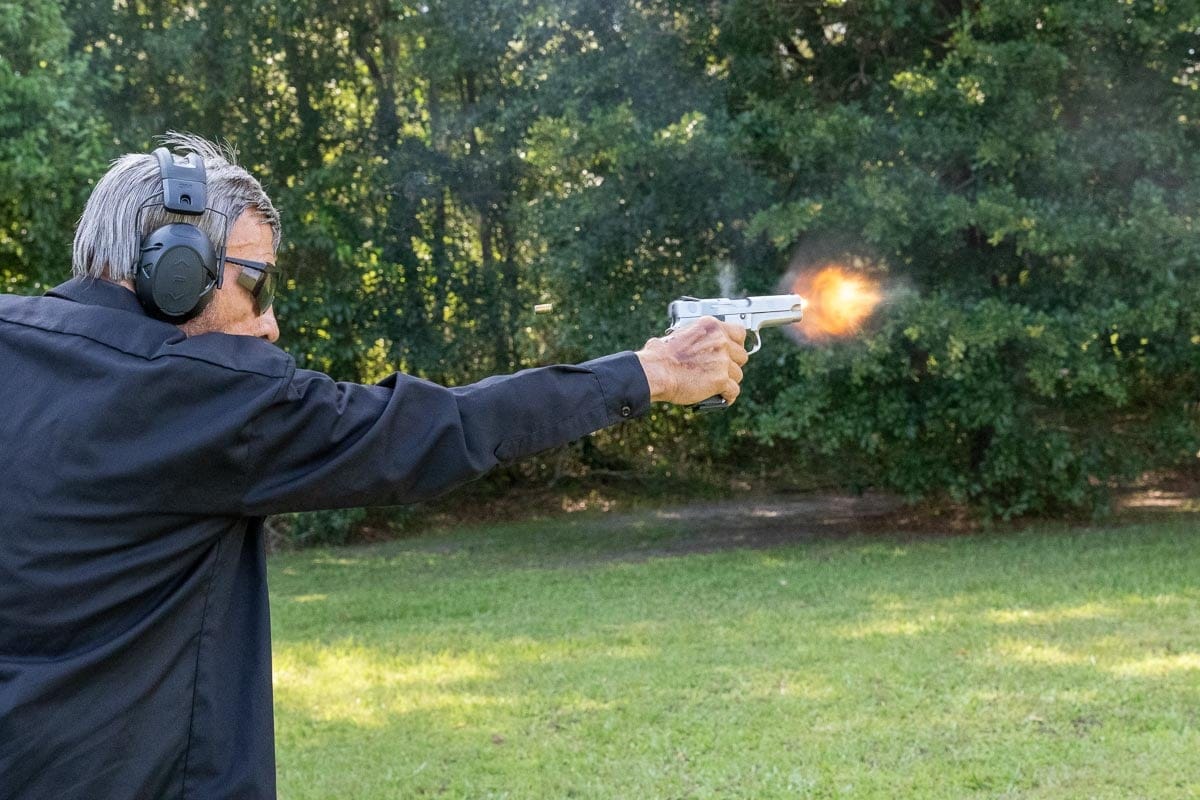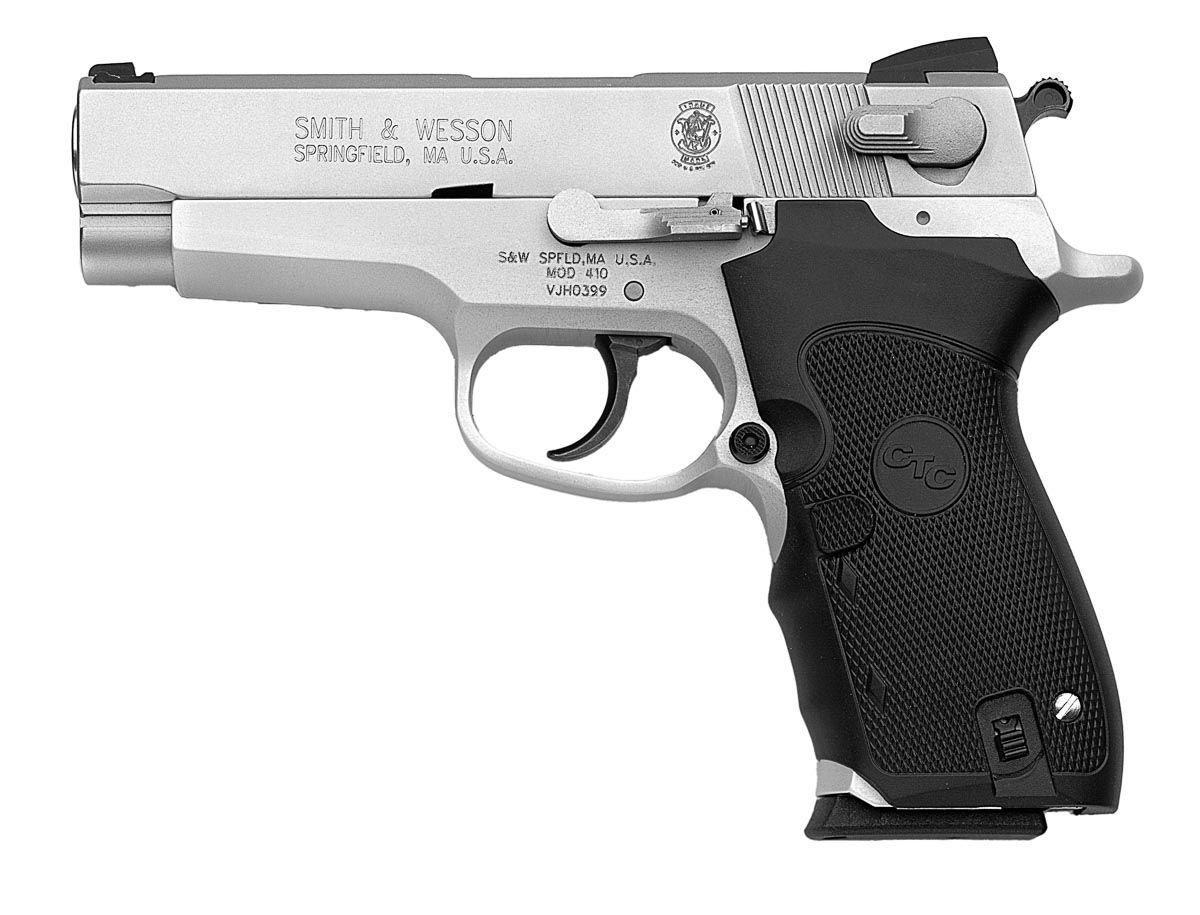From the late 1980s to the end of the 20th Century (and in some models, a little beyond), we had the Third Generation Smith & Wesson semiautomatic pistols. To appreciate them, we have to understand what preceded them.

After the sales failure of their little pocket autoloaders during the Depression years, Smith & Wesson avoided “square guns” and made only “round ones” until after WWII. When the US Government indicated a desire to switch to 9mm military service pistols the company was motivated to design one, and after that fell through attempted to recoup their losses with their “9mm Automatic,” later dubbed the Model 39. Gun writers loved it; cops, not so much. Illinois State Police head of Ordnance Louis Seman convinced the superintendent to adopt the Model 39 in 1967. Good news: in a study assigned by Troopers Lodge 41 of the Fraternal Order of Police for Illinois Trooper magazine, I was able to identify 13 officers who had survived situations in which they would probably have been killed if armed with their old service revolvers. Four were saved by the greater firepower, the rest by the gun’s safety devices when a criminal got hold of the pistol. Bad news: in a survey I conducted of troopers with approval by ISP headquarters and the Troopers Lodge, a majority of troopers reported they were “less than totally confident” to “totally insecure and unsafe” with the gun, owing to malfunctions experienced during training. ISP ordered all magazines downloaded by one to reduce stoppages.
Seman and his heirs in the Ordnance Unit, Bob Cappelli and Sebastian Ulrich, gained the ear of Smith & Wesson. The company’s improvements began with the 39-2 and went next to the Second Generation, designated by three-digit model numbers. The single-stack magazine Gen 2 series still felt great, and the double-stack series still felt as blocky in the hand as the first generation Model 59, which had been the first “high cap” 9mm to gain American police acceptance. With Gen 2, one no longer needed to put the gun “on safe” to make it drop safe, and reliability improved. Gen 2 included the introduction of S&W’s first .45, the aptly named 645 which lasted for only three years. The ambi safety/decock levers on Gen 2’s were a bit rickety on the southpaw’s side, though. The Second Generation was good, but the best was yet to come.
Gen 3

I was at the gun writers’ seminar in Springfield, Massachusetts where S&W previewed the Third Generation. We were impressed. The double action trigger pulls were smoother, and the single action pulls were outstanding and had shorter reset than the SIGs and Berettas they were directly competing against. The grip shape had been changed: much more user-friendly, so SIG-like that some of us nicknamed them “SmIGs”. The ambi safety levers were much sturdier. The poor accuracy of the First Gen guns had been remediated.

They would be made in blue and stainless, all-steel or with lightweight aluminum frames, sizes small, medium, and large, in grades resembling Sears’ old “good/better/best.” Decock-only would become an option, as would double action only (DAO). DAO’s were very popular among police during the transition from revolver to auto, and I always thought the Smith DAOs were the best: very smooth, with a shorter reach that fit more hands than the Beretta or SIG counterparts. Many 9mm DAO Smith 5946s still work the streets from NYPD (where it became the second most popular optional gun after the lighter, cheaper Glock 19) to Chicago PD. Calibers included 9mm, .40 S&W, .45 ACP and .356 TSW, which debuted in the Third Generation.

Personal Experience
In 1988 I got the department I served to adopt the S&W 4506, the fourth agency in the world to do so, and we never regretted it. These big .45s grouped 2.0 to 2.5 inches at 25 yards, fed empty cases, and proved utterly reliable. I committed to the platform and for a few years carried the 4506 on duty and on my own time under winter garb, with the lighter 4013 .40 for spring and fall concealment and the little aluminum-framed 9mm Model 3913 under an un-tucked tee or polo in summer. All were tuned: the 4506 by Bob Houzenga, the 4013 by Rich Devoid at Tarnhelm (www.tarnhelm.com), and the 3913 by Karl Sokol. All had the same “feel,” the same 8+1 capacity, and the same easy-to-operate safety/decock lever.

They lent themselves to customization. Ray Saltzman in Indiana built a compact 7+1 4016 into a carry comp that gave it the silhouette of a 4506 with a shorter butt and tamed the recoil of .45 ACP. Ace Hindman turned one of my 4506s into a .45 Super with a sweet action. Wayne Novak took a 4506 I won at a police event and turned it to single action only with a trigger like a Model 52 target pistol that won multiple matches for me, and S&W’s own Tom Campbell turned another of my 4506s into the first double action only .45 auto to leave the factory. The S&W Performance Center turned many Gen 3s into exquisite target pistols, and Gen 3 was of course the vehicle of the short-lived .356 TSW round that we might just discuss in a future article.
The trend to polymer guns sounded the death knell for the Gen 3 Smiths; the company came out with its own Sigma series of “plastic pistols” and then their more successful M&P series. For some years in the 20th Century, they made short runs of the DAO 9mm 5946 for NYPD and the RCMP, which still have them. But in their short life span, the Gen 3s were made in so many models that we all joked about needing a decoder ring — more variations than we have space to discuss here. When S&W pulled the plug on spare parts it saddened many. For years, Gen 3 S&Ws sold for $300 or so, but today the “you don’t know what you’ve got ‘til it’s gone” factor has jacked prices up significantly.



